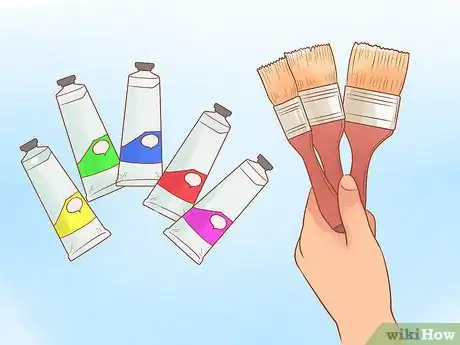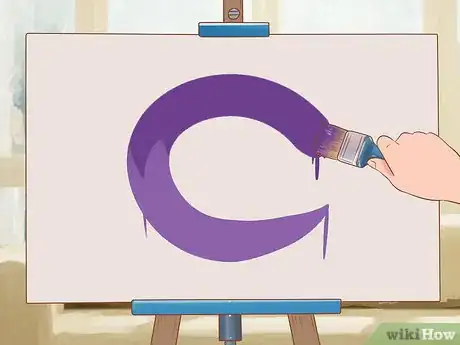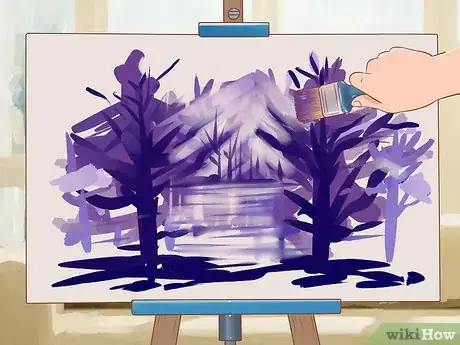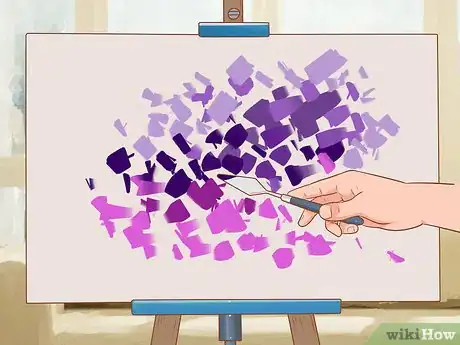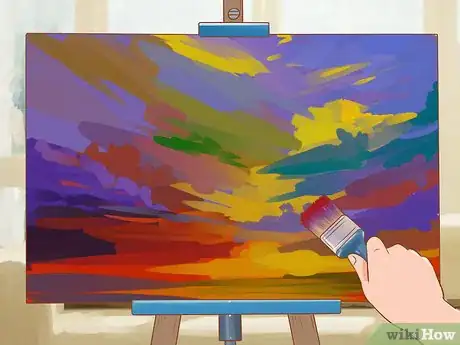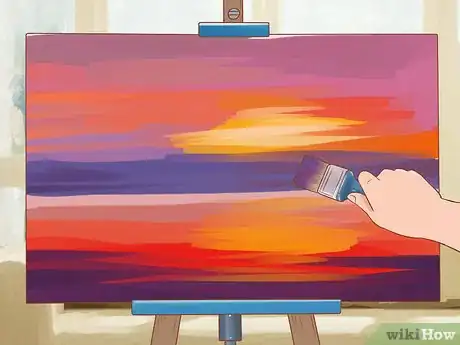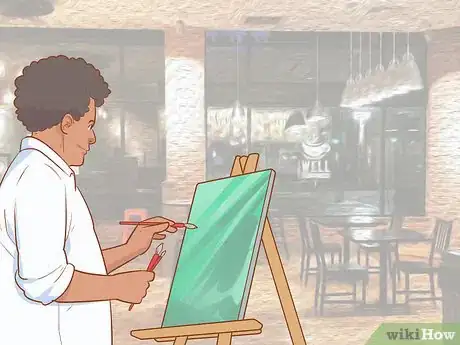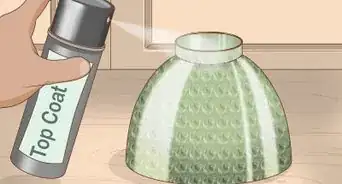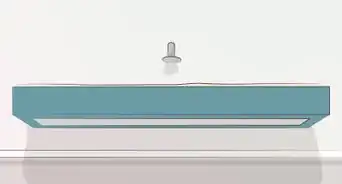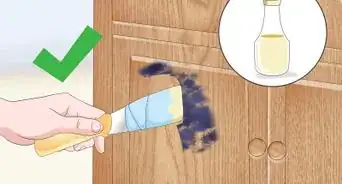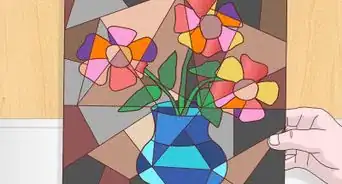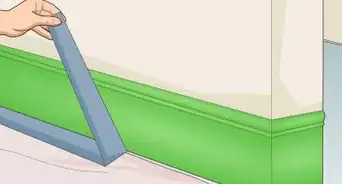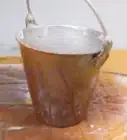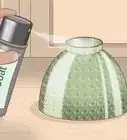This article was co-authored by wikiHow staff writer, Jessica Gibson. Jessica Gibson is a Writer and Editor who's been with wikiHow since 2014. After completing a year of art studies at the Emily Carr University in Vancouver, she graduated from Columbia College with a BA in History. Jessica also completed an MA in History from The University of Oregon in 2013.
There are 8 references cited in this article, which can be found at the bottom of the page.
This article has been viewed 21,439 times.
Learn more...
The impressionists were masters of capturing movement and energy in their paintings. To paint in a similar style, adjust your brush strokes and paint with bold colors. Layer your paint to blend the colors and add texture to your painting. Since Impressionists painted a variety of subjects and landscapes, practice painting scenes that interest you. Focus more on painting a moment than creating a realistic painting of your subject. More than anything, stay relaxed and don't be afraid to take chances.
Steps
Painting with Bold Brush Strokes
-
1Get out acrylic or oil paint and large paint brushes. Although the impressionists used oil paint, it can take 1 to 2 days to dry. If you'd like to use paint that dries much faster, use acrylic paint. These dry within 20 to 30 minutes. You'll also need paint brushes that you're comfortable working with.[1]
- To help you create large brush strokes, consider using paint brushes that are slightly larger than what you're used to using.
-
2Practice making distinctive brush strokes to make basic shapes. Place a sample piece of canvas on your easel and spend a little time painting basic shapes. To paint a circle, make a ring of curved brush strokes. Play around with using different colors so you can see how they blend together. Try painting squares or triangles using long, dashed brush strokes.
- Keep the brush strokes small so the paint gives a sense of movement within the painting.
Advertisement -
3Make your brush strokes thick and distinctive. Dip your large paintbrush into the paint and brush it onto your canvas using firm, bold strokes. Leave the strokes alone instead of blending them together. Continue to paint your subject and the foreground using distinctive, bright strokes.[2]
- If you move away from the painting, the thick brush strokes will blur and combine to create a sense of energy.
- A finished painting might be made up of thousands of individual brushstrokes!
-
4Apply paint with a palette knife to create depth. Try painting with the tip of a metal palette knife instead of a brush. Press the tip onto the canvas and pull it to drag the paint while you apply it. Keep adding layers of paint to create texture.[3]
- You can also drag the palette knife through paint on the canvas to scratch or swirl the paint's texture.
-
5Work quickly to give the painting a sense of movement. Instead of studying the subject and painting methodically, paint quickly to capture the idea of your subject. Imagine you're sketching with your paintbrush instead of making a formal, polished painting.
Tip: If you're struggling with painting quickly, give yourself a set amount of time and set a timer. Challenge yourself to complete the painting within the set amount of time.
Using Color and Shadow
-
1Dab different colors of paint close together to create an image. Dip your brush into the paint and use the short strokes to put small amounts of color on the canvas. Paint different hues of the same color next to each other so your eye blends them together to make a single image.
- For example, if you're painting a flower, paint bright reds or oranges to be the petals and dab a little dark purple underneath them to be the shadows. To highlight the center of the flower, put a few strokes of white.
Tip: There's no need to mix the paint on the palette before you apply it to your canvas. When you look at the finished painting, your eyes will blend the colors together.
-
2Paint with as many bold colors as you like. Try an impressionist trick and instead of painting a few single colors, such as a plain blue sky or green trees, paint the sky with blue and purple brush strokes placed next to each other. To make the green of grass or trees, use greens, yellows, and blues. Don't be afraid to use lots of bright colors.[4]
- For example, if you're painting a still life of flowers, you might use bright green, red, purple, and yellow. Instead of looking overwhelming, the bright colors will make your impressionist painting appear vibrant.
- Artists such as Monet and Renoir often painted with a few dominant colors and filled in their work with accent colors that were a little more subdued.
-
3Limit your use of neutral colors. Very few impressionist paintings feature black, white, or gray. Instead of using these paints for shadows and dark areas, use muted colors, such as dark greens, blues, or purples, that will contrast with the bright colors of your subject.[5]
- For example, Renoir famously used rich, deep blues instead of black in his portraits and paintings of crowds.
-
4Continue to paint without letting it dry in order to make a soft look. Since most impressionists worked with oil paint, which takes 18 to 24 hours to dry, they would frequently paint directly on wet paint. This gives the painting a blurred look that also suggests movement.[6]
- Painting wet-on-wet is also important for making the colors mix together. For example, you might paint reds near dark purples or blues to give the impression of a sunset.
Variation: If you'd like parts of the painting to look really distinctive, let the paint underneath dry before painting more. For example, if you're painting a sun, let the acrylic paint dry for 20 to 30 minutes before painting the distinctive rays of light.
-
5Exaggerate shadows and include highlights in your painting. Try painting when the sun is making long shadows and paint them with blues, purples, and reds. You can also paint the same subject at different times throughout the day in order to emphasize the changes in light. Paint bright yellows, oranges, and reds on areas that you want to highlight.
- Pay attention to how changes in the light make the painting feel different. For example, Monet's haystacks at sunrise feel warmer and more inviting than his haystacks painted at sunset.
Choosing a Painting Subject
-
1Look for an outdoor subject. Most impressionists painted outdoors instead of in studios so they could catch quick changes in color and light. Select any outdoor setting you like and pay attention to what makes it unique in that particular moment.[7]
- Consider painting a river bordered by snow, a field ready for harvest, a beach at twilight, or a park with blossoming flowers.
Did You Know? Impressionists, such as Monet, frequently painted the same outdoor subject multiple times at different times of the day.
-
2Select an indoor still life to paint. Although impressionists frequently painted outdoors, they also painted more traditional studio subjects, such as still lifes. To paint a still life like an impressionist, avoid arranging it so it appears staged or perfect. Instead, consider scattering objects on your surface or choosing 1 item to crop and paint.[8]
- For example, van Gogh famously painted single vases of irises, poppies, and sunflowers while Cézanne scattered food, bottles, and jugs on uneven tabletops.
-
3Choose a scene of everyday life if you're painting indoors. Instead of painting scenes of the aristocracy or formal portraits, impressionists chose to paint average people going about their everyday lives. To give your painting a sense of movement, have your subjects eat, drink, dance, or show action.[9]
- Popular indoor settings for impressionist paintings include bars, cafés, and theaters.
-
4Pick a single moment rather than a major event. In the past, artists tended to paint well-known events or stories. For example, paintings captured recognizable religious scenes or famous battles. Instead, impressionists chose to capture a brief moment, almost like a photograph. To choose a single moment to paint, think about what catches your eye or really excites you.[10]
- For example, paint a few people talking at a picnic or dancers warming up before they perform.
-
5Play around with composition. Your painting can be sweeping in scale, such as a small boat in the middle ground surrounded by a vast ocean, or the subject may be intensely cropped so your viewer sees a few key details. For example, instead of showing a group of riders on horses surrounded by the countryside, you might paint a closeup of some of the horse with parts of the rider and leave out the background entirely.[11]
- You can paint traditional compositions, such as a still life of flowers or fruit, in an impressionist style.
-
6Simplify the details of your painting. Remember that impressionists weren't trying to convey a realistic scene. Once you've selected a key feature to paint, keep the surroundings simple so they don't compete with your subject. To keep things basic, give the most details and brightest color to your main subject. Then use muted colors to paint the background with larger, less defined brush strokes.[12]
- For example, if you're painting a crowded indoor scene, only paint faces on the people in the immediate foreground. Then blur the features as the painting moves to the background.
References
- ↑ http://www.impressionism.org/pleine.htm
- ↑ http://www.impressionism.org/pleine.htm
- ↑ https://youtu.be/ZxsqOg16Puo?t=225
- ↑ https://www.tate.org.uk/art/art-terms/i/impressionism
- ↑ https://www.metmuseum.org/toah/hd/imml/hd_imml.htm
- ↑ https://useum.org/exhibition/curated/Impressionism/techniques
- ↑ https://www.theartstory.org/movement-impressionism.htm
- ↑ https://mymodernmet.com/what-is-still-life-painting-definition/
- ↑ http://www.artmovements.co.uk/impressionism.htm
